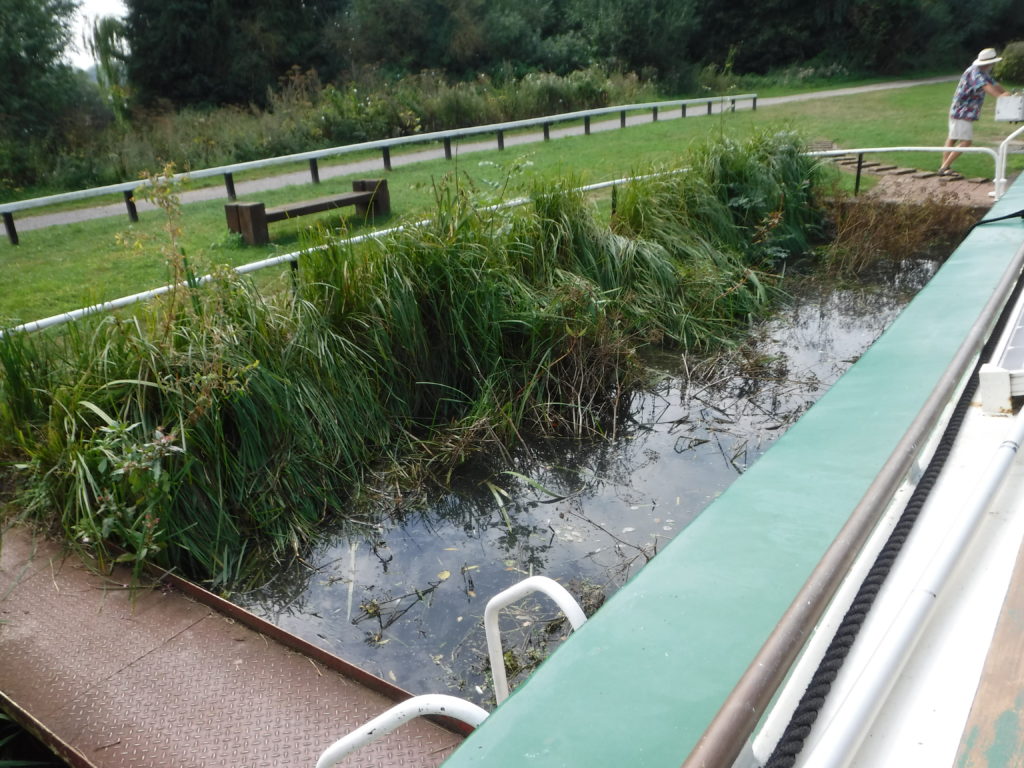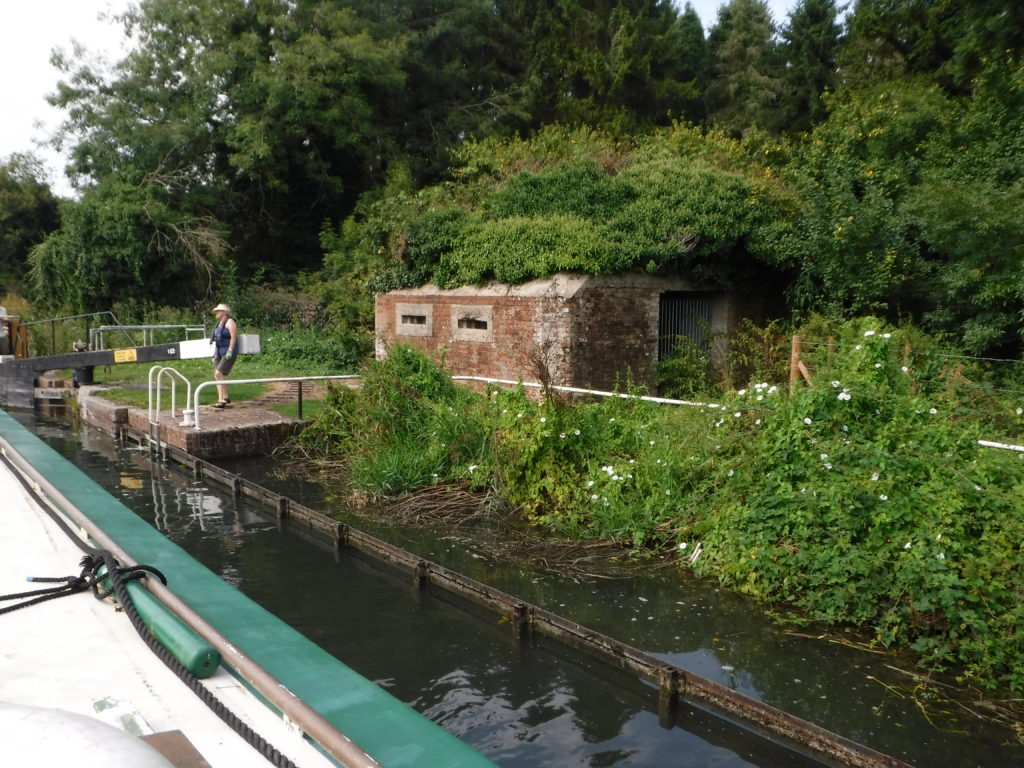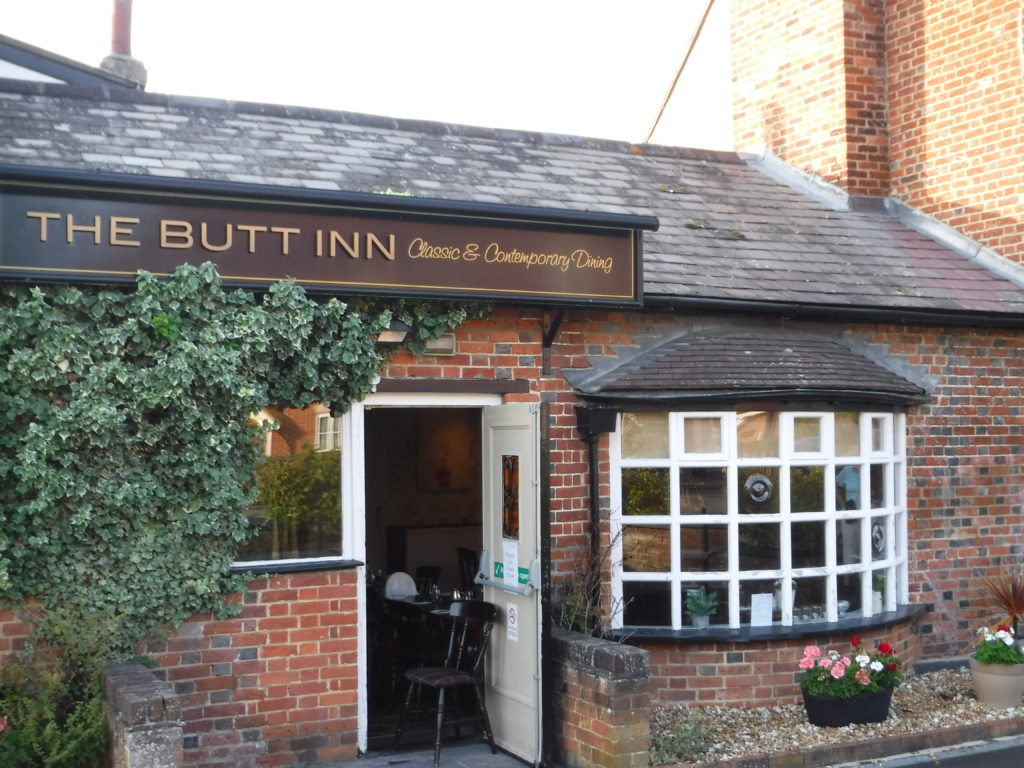The K&A
Today we bid farewell to the Thames, and made a right turn onto the Kennet and Avon canal.

As you can see from the picture, we had yet to escape from the urban sprawl of Reading. Reading has redeveloped the canal front area with shops and offices, but unlike boater friendly towns like Banbury or Coventry, they have put a fence up next to the water and don’t want you to moor there.

To be fair, this part of the navigation is a hybrid, partly the remains of the River Kennet, and partly stretches of canal, with the river joining and leaving the cut here and there, so there is deeper water and a relatively strong current. Anyone falling in the water in Reading might be in more trouble than most of the canal system, where the water is only a few feet deep.
The K&A connects the Kennet (which flows into the Thames, obviously) with one of the many River Avons. This is not the Stratford-On-Avon one, this is the Bradford-on-Avon one. This Bradford is not to be confused with the one in Yorkshire, though. (Americans, before you complain about confusing British place names, tell me which state Springfield is in.) Anyhow, this Avon runs into the Bristol Channel at Bristol, so the K&A connected London to Bristol, enabling cargo bound for the Americas to avoid the tricky voyage down the English Channel. Of course, there was a price to pay for this. There are hills in the way. The summit of the K&A is 457 feet above sea level. There are over a hundred locks to go up and down. Here’s the cross section.

What’s more, these locks were designed for bigger boats than our little Pegotty, which is fifty feet long by six foot ten wide. The locks are at least seventy feet long and fourteen feet wide. That large a volume of water rushing in makes it hard to keep the boat in one place, so it’s actually easier when there are two or three boats crammed into the lock. After a day’s hard slog, we are between locks 95 and 94, moving from right to left. It looks like a long way to Bristol.
The locks on this canal originally were only bricked part of the way up, and had turf sides above that. Most of them have been rebuilt but Garston lock has the original turf sides, plus two WWII pill boxes beside it in case the Germans want a rematch. That makes it hard to hold the boat in place with mooring lines while filling the lock. That, along with the tendency for the gate on one side to swing open while you are closing the other side, makes it one of the most annoying locks on the system, as well as one of the ugliest.


Being on the Thames for a while lowers your standards for what a good mooring is. On most canals it is a hard vertical bank of metal, wood, or cement, with either mooring rings or a way to attach mooring hooks. On the Thames it is anywhere you can get reasonably close to the bank and hammer in mooring spikes. That’s pretty much true of the K&A as well, as it is a river conversion job, though I hear there are better moorings further along.
Anyhow, we made it through the Aldermaston Wharf swing bridge just in time, and found a place to moor. (Boats aren’t allowed to block the road traffic on this bridge during the rush hour.) The bank was uneven, so the stern was a little way out. Paula tried to throw me the mallet to drive in the mooring spikes, but it bounced off the bank and fell in the canal. She bravely volunteered to fish it out – the canal was only a foot or two deep and it was handle up, so it was not too hard to reach, but there were stinging nettles there, and in spite of my warnings, she got nettled on both arms. It’s not a huge deal, she’ll be fine in 48 hours, but her arms were stinging, and neither of us felt like cooking dinner, so we headed out for a meal at the nearest pub. Paula rather liked the name.

2 thoughts on “The K&A”
Remember Dock leaves ? Helps with nettle stings.
Yep, I went and found some and they helped.